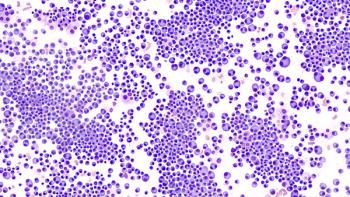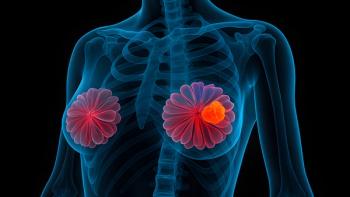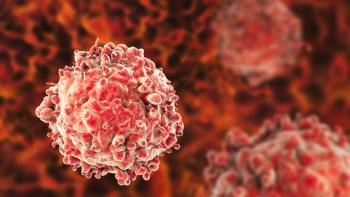
Nurses, APPs Can Help Prevent Parkinsonism During Cilta-Cel in Myeloma
By monitoring patients’ CBC and other symptoms, nurses and advanced practice providers can spot early indicators of parkinsonism risk, per Yi Lin, MD, PhD.
Oncology nurses and advanced practice providers (APPs) can play an active role in preventing long-term and potentially debilitating adverse events (AEs) associated with the treatment of multiple myeloma with ciltacabtagene autoleucel (cilta-cel; Carvykti), says expert Yi Lin, MD, PhD.
Lin spoke with Oncology Nursing News at the
According to Lin, peak absolute lymphocyte count (ALC) greater than 3 x 109/L was an indicator for the later onset of AEs such as parkinsonism. Remaining vigilant of absolute blood count (ALC) and taking potential signs of AEs seriously both while patients remain at chimeric antigen receptor (CAR) T-cell therapy centers and after they go home can help ensure that nurses and APPs give patients the best chance to avoid such toxicities and remain on treatment longer.
Yi Lin, MD, PhD, is an oncologist, hematologist, and professor of medicine at the Mayo Clinic Health System in Rochester, Minnesota.
Transcript
We’ve had FDA-approved [CAR T-cell therapy] for patients with multiple myeloma for multiple years now. We’re now seeing some emerging signals, both in clinical trial and in standard-of-care practice, that some patients, beyond that first month when they’re staying at the CAR T treatment centers, when they’ve returned home—somewhere in that first 6-month window—there may be some
We found, not surprisingly, the risk factors that are more associated are features of patients who have had either slightly more disease burden or more inflammatory response after CAR T, and those patients who had high expansion of the lymphocyte count. Typically, in that week 2 window, where we expect to see CAR T expansion, [an ALC of 3 x 109/L] is the clinical cutoff range. For patients who had these lymphocytes go beyond that, they had close to 8% to 9% risk of parkinsonism vs those patients who didn’t have such high expansion. And for those patients [who did not have high lymphocytic expansion], their risk was less than 0.2%.
Fortunately, this is happening in the window when patients are still under close monitoring at the CAR T treatment centers, and so we and other centers have initiated processes where our nurse practitioners, physician assistants, and nurses, who are involved in the care of the patients, are very vigilant to say, “Now we’re heading into day 10 and day 14”—that it’s a window where we really see on that [complete blood count] was differential, that lymphocyte number’s starting to go up.
There are things that the nurses, physician assistants, and nurse practitioners can do in the broader oncology/hematology clinic when the patients return home. Being mindful that in that first 6 months, if they’re starting to have a little bit of that diarrhea, of course, [nurses] still need to do the usual testing for potential infections [if needed], but in the back of the mind, to be mindful of the possibility that this could be a late CAR T [adverse] effect would be important, so that [they] can make that connection to the CAR T centers and start some of those early management interventions before the patient becomes too debilitated from their nutrition loss and calorie loss from the diarrhea.
Recognizing some of the early onset of the parkinsonism symptoms that is not necessarily just “the patient seems to be more tired or just behaving a little bit differently” could make a difference in trying some of these early management [interventions] that could help the symptom resolve vs waiting too late and having too many [adverse] effects piled on top of each other.
We would rather get a false alarm and say, “Hey, is this potentially related? This seems to be something that’s different than how the patient is behaving normally,” and just have that conversation, rather than missing that window of opportunity for evaluation and management. I think that’s important evolving knowledge on what we need to watch for once the patient has returned home.
This transcript has been edited for clarity and conciseness.
Newsletter
Knowledge is power. Don’t miss the most recent breakthroughs in cancer care.

















































































